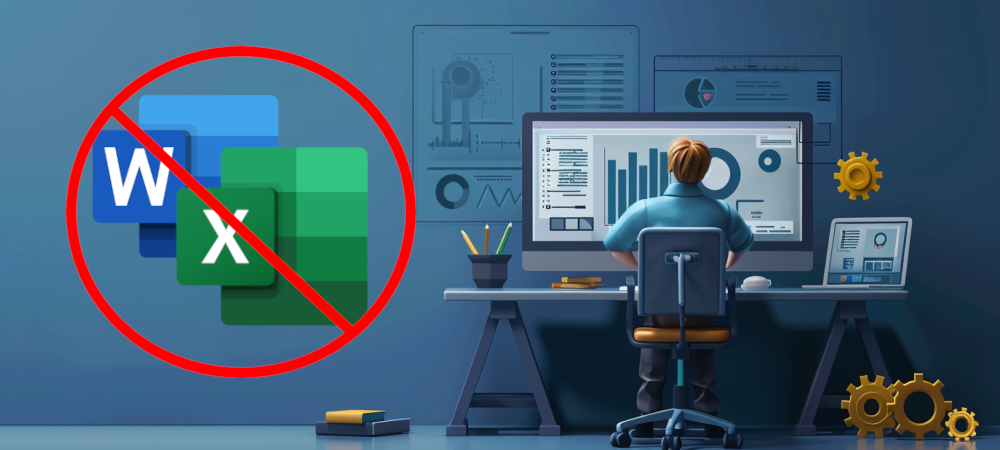Have you ever considered tracking just how well your team performs?
In the competitive world of assembly and fabrication, monitoring every nut and bolt can make the difference in achieving exceptional quality and efficiency.
It's in this quest for excellence that Key Process Indicators (KPIs) —quantitative metrics measuring vital aspects of your operation—serve as the compass guiding teams towards peak performance.
They dictate manufacturing success.
Understanding Key Process Indicators (KPIs)
Key Process Indicators (KPIs) are quantifiable measures that gauge the efficacy and progress of your organization's strategic performance. They are essential benchmarks that validate your team's alignment with broader operational goals, enabling targeted improvement efforts.
In essence, KPIs are the pulse of your operational health, akin to vital signs in the human body. By implementing Work Instruction Software, you facilitate the precise tracking of these indicators, ensuring that data-driven decisions are not only possible but are made in real-time. This symbiosis of technology and process oversight cultivates an environment primed for continuous refinement.
The strategic application of KPIs through this software creates a loop of feedback and advancement. It transforms abstract goals into tangible checkpoints, providing a means to celebrate success and diagnose areas in need of intervention.
The Role of KPIs in Performance Management
Key Process Indicators (KPIs) serve as navigational beacons, guiding the workforce toward the zenith of operational excellence and strategic realization. These metrics embody the foundation of successful performance management, mapping out the route to enhanced productivity and quality outcomes.
In the landscape of performance management, KPIs act like a compass orienting organizational effort. Leveraging insights from Work Instruction Software ensures precision and specificity in monitoring progress, establishing a clear view of the path ahead with actionable intelligence to make informed improvements.
KPIs are the compass that aligns operational effort with strategic intent.
When wielded adeptly within the framework of Work Instruction Software, KPIs transcend their role as mere metrics. They become the architects of innovation and continuous improvement, enabling assemblers and fabricators to not only meet but also exceed customer expectations with regularity. Through effective use of KPIs, production workflows become a dynamic symphony of efficiency and excellence.
Selecting the Right KPIs for Your Business
In selecting KPIs, one must respect their power to drive behavior and shape performance. The appropriateness of the KPI selection is as paramount as the data itself in steering an enterprise toward success.
For assemblers and fabricators, the choice hinges upon a deep understanding of both your process intricacies and customer expectations. Key Process Indicators (KPIs) should reflect critical success factors, from production throughput to aspects of quality and timeliness. Leveraging Work Instruction Software assists in pinpointing exact areas where KPIs can deliver transformative insights and drive operational enhancements.
Moreover, the reliability and relevance of the data within these KPIs cannot be overstated. It's crucial that the chosen indicators are sustainably measurable and provide consistent feedback. To this end, Work Instruction Software proves invaluable, offering a platform where KPI tracking is structured and seamlessly integrated into daily operations without disrupting workflow.
Finally, for a KPI system to be truly effective, it must be dynamic and evolving. It should be reviewed periodically for alignment with strategic goals and adaptability to changing market demands. Implementing a robust Work Instruction Software can ensure that as production goals shift and customer needs develop, your KPIs continue to guide you toward optimal performance, ensuring the enduring satisfaction of your clientele.
Setting Up KPIs for Maximum Impact
In the architecture of performance measurement, Key Performance Indicators (KPIs) serve as pinnacles of insight – but their efficacy relies on strategic alignment and precision execution. When setting up KPIs, it is essential to establish clear, quantifiable objectives that reflect your assembly or fabrication business's overarching goals. This entails a meticulous process of selection, ensuring the KPIs chosen are not mere data points, but rather actionable metrics that drive improvement. Here, Work Instruction Software provides a critical advantage. By digitizing and centralizing instructions, the software enables precise monitoring and analysis of operational outcomes against set KPIs. The real-time data captured can reveal performance trends and anomalies, allowing you to adjust your processes proactively for maximum impact. This harmonization of KPIs with workflow processes via Work Instruction Software sets the stage for a continuous improvement culture that can significantly elevate your competitive edge.
Aligning KPIs with Business Objectives
Successful KPI alignment with business objectives is instrumental in driving process improvements and organizational performance.
- Establish Clear Objectives: Define unambiguous and achievable targets that KPIs will measure against.
- Select Relevant KPIs: Choose indicators that directly reflect the performance and outcomes of your assembly processes.
- Utilize Work Instruction Software: Implement software to centralize instructions and accurately track real-time performance against KPIs.
- Analyze and Adjust: Regularly review KPI data to identify trends and areas for process refinement.
- Communicate Transparently: Ensure that all stakeholders understand how KPIs correlate with business goals to foster a culture of accountability and continuous improvement.
KPIs, when well-aligned, become powerful tools that transform data into actionable insights for your assembly and fabrication teams.
In utilizing Work Instruction Software, assemblers and fabricators can merge the precision of real-time data with the agility of responsive adjustments, ensuring KPIs are not static but adaptive to the evolving business landscape.
Defining Measurable Outcomes
Identifying precise, quantifiable outcomes is crucial for effective performance tracking.
- Establish distinct Target Metrics that are relevant to your operational goals.
- Integrate Real-Time Monitoring using advanced Work Instruction Software for continuous updates.
- Determine Benchmarks and Thresholds to distinguish normal from exceptional performance levels.
- Outline clear Time Frames for achieving these outcomes to set realistic expectations.
- Ensure Consistency in measurements across different production runs and teams.
This approach guarantees that performance success is not just observed but thoroughly assessed.
With Work Instruction Software, you gain access to an invaluable tool for not only tracking but also enhancing the precision of your performance metrics.
Analyzing KPI Data
Upon gathering KPI data through Work Instruction Software, the analysis phase begins with strategic scrutiny. This step involves parsing through metrics to draw actionable insights, distinguishing patterns and trends that are crucial for informed decision-making. Here, sophisticated algorithms may aid in discerning anomalies or efficiencies, enabling assemblers and fabricators to align their strategies with the most promising indicators of success. Thus, the analysis of KPI data stands as a pillar of performance optimization, transforming raw numbers into an interpretive roadmap towards operational excellence.
Tools for Tracking and Analytics
The paradigm of thoroughly monitored fabrication processes demands robust, intelligent tools that can track, analyze, and report on key process indicators (KPIs), thereby offering a comprehensive analytical foundation. Work Instruction Software serves as a nexus for managing this raw data, fostering an environment that enhances clarity and insight.
The software seamlessly integrates within production workflows, capturing real-time data that informs the KPI tracking continuum. Its automated features ensure that production variables are closely monitored, reducing human error and guaranteeing up-to-date information.
Real-time analytics provide a live pulse on operations, offering instantaneous responses (through customizable dashboards and alerts) that keep pace with the factory floor's dynamic environment. Proactive adjustments can thus be realized to avoid potential bottlenecks.
Advanced tracking tools within the software allow for intricate examination of production line performance against set benchmarks, identifying areas for improvement or innovation. Furthermore, these systems enable operators to share KPI data across departments, promoting a holistic understanding of performance impacts.
Sophisticated reporting functions give users the capability to generate detailed analyses at the push of a button, simplifying complex KPI tracts into digestible formats that inform strategic operational pivots. This streamlines the decision-making process, aligning it with evidence-based insights.
In essence, the rich suite of tracking and analytics tools within Work Instruction Software empowers assemblers and fabricators to not just follow but excel beyond customers' demanding expectations. Such robust applications provide key insights that drive continuous improvement and competitive advantage.
Making Sense of KPI Trends
Key Process Indicators (KPIs) are more than discrete data points; they form patterns that narrate the health of your operations.
- Identify trends by comparing current KPI data with historical benchmarks to discern patterns.
- Utilize Work Instruction Software to continuously monitor and update these benchmarks, ensuring real-time accuracy.
- Investigate anomalies that significantly deviate from established patterns to uncover underlying issues.
- Forecast future performance by analyzing these trends, thereby enabling proactive adjustments.
- Communicate insights across departments with the help of integrated software to promote collaborative improvements.
Understanding KPI trends is pivotal in making calculated decisions for process optimization.
By leveraging Work Instruction Software with robust tracking, you transform raw KPI data into actionable intelligence.
Leveraging Work Instruction Software for KPI Tracking
In the realm of assembly and fabrication, precise monitoring of Key Process Indicators (KPIs) is critical to meeting and exceeding customer expectations. Work Instruction Software serves as an invaluable tool for methodical KPI tracking, ensuring a streamlined pathway to operational excellence.
For assemblers and fabricators, harnessing the capabilities of Work Instruction Software enables the meticulous tracking of KPIs in real time. This digital solution allows for a granular analysis of data and the identification of trends, fostering a culture of continuous improvement and quality assurance.
Adopting a system as robust as Work Instruction Software makes the process of KPI management both efficient and dynamic. It provides the scaffolding required to readily adapt manufacturing strategies in response to evolving demands, keeping your performance metrics on the cutting edge of excellence.
Automating KPI Data Collection
Automation is revolutionizing data collection strategies.
Integrating Work Instruction Software with KPI monitoring tools facilitates automated data collection, streamlining the process and significantly reducing the margin for error. By leveraging technology in this capacity, assemblers and fabricators can obtain timely insights with minimized manual intervention. Consequently, the focus can shift from data gathering to strategic decision-making, bolstering the drive towards operational efficiency and customer satisfaction.
Efficiency is key in tracking performance metrics.
The ability to set up alerts and notifications within the software - thereby acting upon real-time data highly efficiently - is a fundamental advantage of Work Instruction Software. It allows professionals to preemptively address issues before they escalate, enhancing the responsiveness and agility of the manufacturing process.
Data accuracy underpins successful KPI analysis.
Utilizing Work Instruction Software for automated data aggregation ensures a high degree of data integrity, generating reliable metrics that offer a true reflection of performance. This accuracy bolsters confidence in the KPIs being monitored, and in turn, the decisions derived from them.
Enhancing Process Compliance with Real-Time Monitoring
Real-time monitoring through Work Instruction Software bolsters operational adherence and proactive issue resolution, ensuring each step complies with established protocols. Continuous oversight is a vital tool in maintaining the highest standards of process compliance.
Automated alerts signal deviations swiftly, keeping processes on track with minimal delay. Compliance becomes more tangible and manageable.
Critical to reinforcing compliance, real-time data flows from Work Instruction Software permit supervisors to pinpoint exactly where processes may diverge from set instructions. This granularity enables prompt course corrections and upholds the integrity of manufacturing outcomes, benefiting from precise, timely interventions.
With Work Instruction Software, seamless integration of real-time monitoring capabilities elevates process compliance to its pinnacle, ensuring that every element of production adheres closely to set standards. This prevents discrepancies and non-conformity from compromising product quality, leading to a stellar reputation for dependability and trust in the marketplace. In practice, applying such technology translates to a substantial advantage, empowering teams to sustain high fidelity in process execution and customer deliverables.

Richard Mason
By day I help people solve problems, by night I'm enjoying IPAs! For fun I work in my garage building gadgets that cost way more than they are worth.




 2 min read
2 min read



